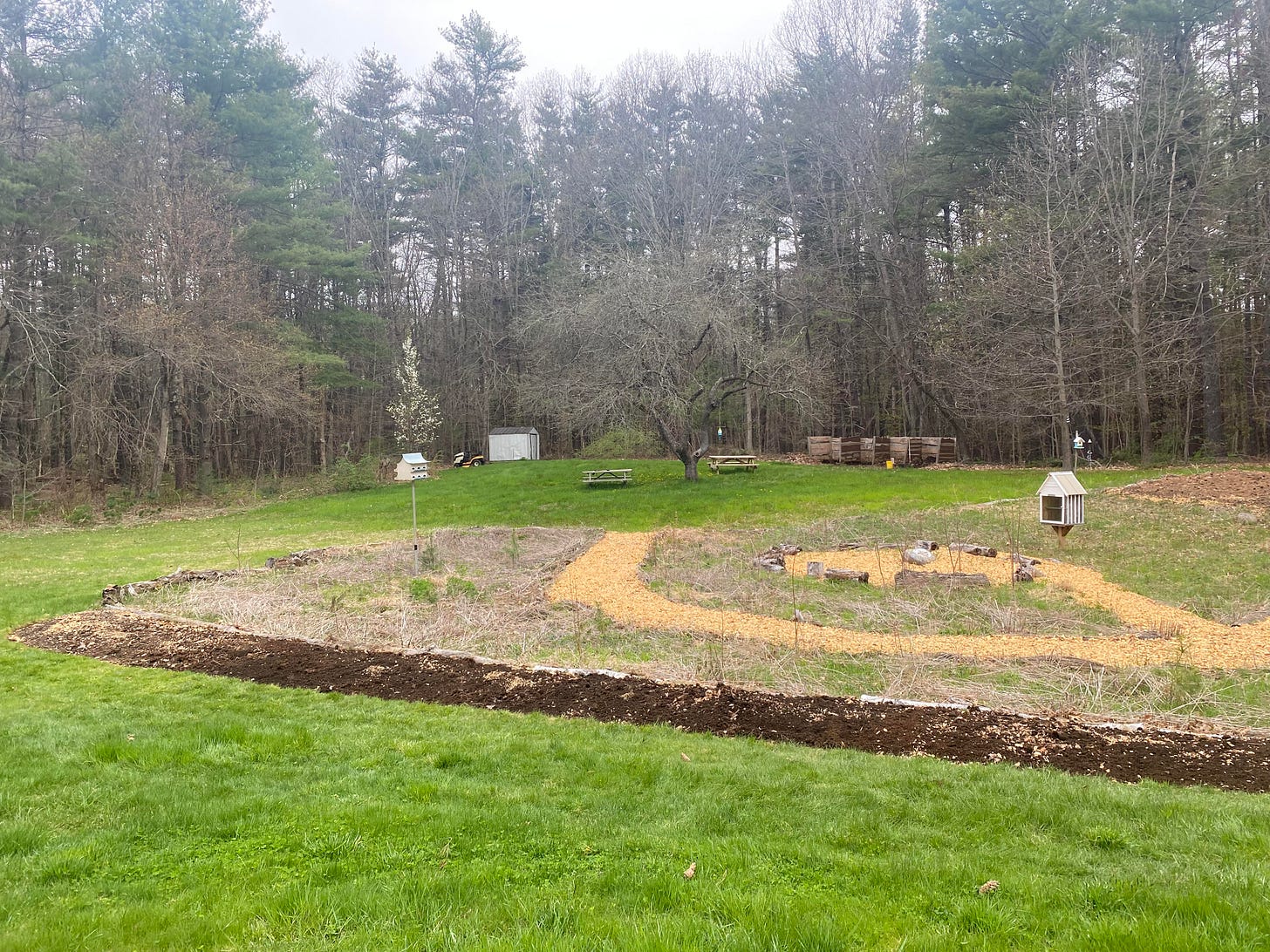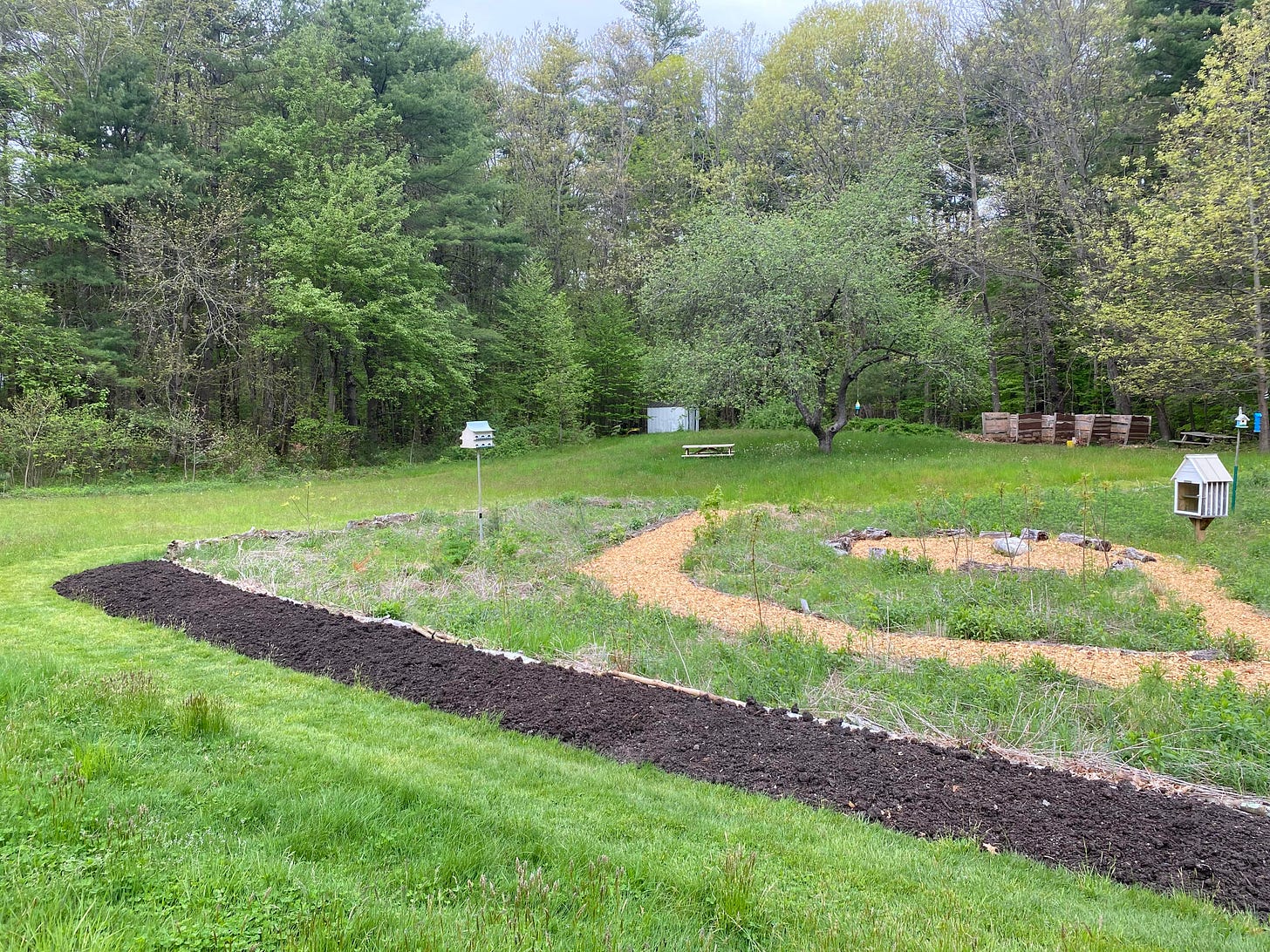This coming week is "Independence Day/ Fourth of July in America: the celebration of America's birthday. It is also one of America's biggest travel holidays - so for all of you who might be traveling, we wish you well!
What is almost never acknowledged is the indigenous contributions to America's independence from Britain or to America's form of democracy.
Regeneration is about repairing that which has been torn asunder. Surely, today, that includes repairing the narrative we are telling about where democracy comes from.
One of my favorite stories to illustrate this is one I first heard orally, at a gathering around Haudenosaunee Confederacy governance on the Six Nations reservation/ territory in 2016 titled, "Polishing the Silver Chain." The title was in reference to an agreement of friendship between my ancestors, the settlers, and the Haudenosaunee Confederacy, who are based in what is now upstate New York and Canada. At the time of this particular agreement, in the mid-1700s, when silver was a common part of life, one of the metaphors used to describe that agreement was a kind of silver chain between peoples that would need continual polishing. Indeed it does.
Like so much that is free, friendship requires responsibility and reciprocity... ongoing polishing.
At the gathering, an elder retold the story of the Boston Tea Party. You can also find this story in the book, Exiled in the Land of the Free, a collection of essays edited by Chief Oren Lyons and John Mohawk.
If you grew up in America, you probably know the basic story of the Boston Tea Party: in 1773, the Revolutionary War between the mostly English settlers in the 13 colonies and the British government was set off by a group of men, many of whom were dressed as Native Americans, throwing tea and sugar overboard an East Indies Ship, insisting that there would be no taxation without representation. It has remained a rallying cry for generations and across many borders. It was one of a series of protests that escalated into what we now call the American Revolution.
The question the Native elder at this gathering asked us was, why did these white folks dress as Indians? What were they trying to convey? It was not just about dressing up or hiding their identity. They could have had many other ways of doing that.
Native peoples were associated with freedom, liberty, independence, bravery, and sovereignty, and a genuine love of life. They were donning more than a disguise. And they were associated with America. Because they were, clearly, Americans. The first Americans. (Indeed, for centuries the most common personification of "America(s)" in Europe was a Native American woman - and then, after the Revolutionary War, it shifted to become a classical (white skinned) woman wearing a Greco-Roman outfit - quite similar to her counterpart in what we now call Europe.)
As the authors of Exiled in the Land of the Free write: “The Sons of Liberty were making a symbolic statement: like the Mohawk Indians, they, too, had been born in America. They were proclaiming their separate identity…. One could not be more ”American” than to be “Mohawk.”
That image has stayed with me: that the settlers, in trying to become something other than British, were trying to become more American… which meant becoming more like Native Americans.
This idea hides very well in plain sight. Early Americans did not actually say that they wanted to become like the Native people. Natives are portrayed as either Noble Savages or Brutes - a trend that continued in other parts of the world.
But the values - of freedom, of liberty, of happiness, of even courtesy and respectful diplomacy - the values that the European Americans were yearning for - were being expressed all around them by the Native peoples. Of course these settlers wanted to be more like the Native peoples.
Really it would have been so much easier if they had been able to get over their own attachment to their own cultural superiority and tried something more akin to open and honest respect and friendship! I often wonder what kind of place this country might have become?
We don't have very many spaces to discuss these indigenous-orientated histories of democracy on the Fourth of July.
This is why Rē is so excited to lift this space up, offered by our partners at Sequoia Samanvaya and Collective Wisdoms, up! Just so we are clear - if you are based outside of the United States and are interested in these topics, this is most definitely for you! Please do Join Us.
And - another wonderful thing happening this whole summer is the growing of the garden in Amesbury. If you are in the area, please do come by! We would love to see you!
Here's a message from Isabel Cole and the garden in Amesbury:
Hello Community!
The garden is growing and thriving! It has been a crazy last few weeks of weather but our plants are doing well. At the moment the garden is looking beautiful and is growing bigger every day.
We have had so many community members share seedlings with us and we want to give a big thank you to everyone who has contributed to the garden. We even had our first harvest of Kale yesterday that was used by community members in some delicious smoothies! With all our infrastructure set up (arches, shade cloth, trellising poles, etc.) it's crazy to see just how far this garden has come: it started as a strip of grass, became a bed of flipped grass, a composted bed, and now to a beautiful garden bed with so much growing. Here is a beautiful timeline of how far we have come.
There have been lots of learning curves and opportunities to try new gardening methods in the process of building this garden. We would love to share with you some of what we have learned over the past few weeks.
Our first set of seedlings planted were put in the ground during our last volunteer day. While many of them grew very well, some died from the heat or were eaten by animals. We learned from this and brought our next seedlings outside to sit in some shade to harden them up before transplanting. This allowed them to get used to the heat. We also have been planting them in the mornings and evenings when the weather has been cooler.
We also set up some low tunnels using shade cloth (which is a thin fabric that is draped over metal hoops) to give the plants some shade and protection from the bugs and critters that have been trying to snack on them.
Over the past few days, we have been setting up drip irrigation to help keep our plants watered in the summer heat. We bought our supplies at Site One in Portsmouth and were able to get some thicker landscape irrigation lines that will last many years. This process of setting up a unique garden bed took some time and research to find the right materials and to put all the pieces together. If anyone wants some tips about drip irrigation or building low tunnels with shade cloth please feel free to reach out. We are happy to share what we have been learning!
We are so thankful that gardening provides opportunities to learn from others and practice patience and adaptability. Every year there can be so many factors that change and we are excited to be in the process of learning how to best grow food for our community.
Best,
Isabel
Upcoming Event:
4th of July Webinar
Thursday, July 4th, 1 pm to 2 pm ET
With Sara Jolena Wolcott, Montgomery Hill, and Kristine Marie Hill
How do we engage with Independence Day?
Can we possibly honor this holiday without deepening into the roots of the expressed values of independence, freedom, and happiness... which were very much inspired by the European settlers' indigenous neighbors?









